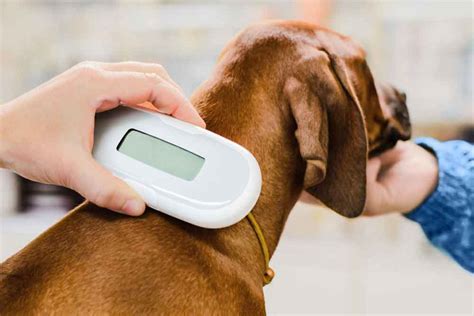Introduction

In the ever-evolving landscape of pet ownership, ensuring the safety and well-being of our canine companions remains paramount. Traditional identification methods, such as collars and tags, while undoubtedly important, often prove insufficient in the face of theft, loss, or accidents. Microchipping, an advanced and reliable technology, has emerged as an indispensable tool in the field of dog identification, offering unparalleled accuracy and permanence.
The Importance of Dog Identification
- Lost and Found: An estimated 10 million dogs enter animal shelters across the U.S. annually, and nearly half of those remain unclaimed. Microchips provide a unique and permanent form of identification that can reunite lost pets with their owners even when collars or tags are removed or lost.
- Theft Deterrence: The presence of a microchip serves as a deterrent to potential thieves, as it makes it significantly more difficult to sell or re-home a stolen dog.
- Emergency Situations: In the event of an accident or emergency, a microchip can provide crucial information to first responders, allowing them to contact the dog’s owner immediately.
- Health Records: Microchips can be linked to online databases that store a dog’s health records, vaccination status, and other important information, ensuring that their medical history is always accessible.
Microchipping vs. Collars and Tags
While collars and tags remain useful for basic identification, they have several limitations compared to microchips:
- Removable: Collars and tags can easily be removed or lost, rendering them unreliable as a permanent form of identification.
- Limited Information: Collars and tags typically only provide the dog’s name and owner’s contact information, which may not be sufficient in all situations.
- Ineffective for Lost Pets: If a dog is lost without a collar or tag, it becomes extremely difficult to recover. Microchips, on the other hand, provide a permanent and tamper-proof solution.
The Process of Microchipping
Microchipping is a simple and pain-free procedure that involves implanting a tiny chip beneath the dog’s skin, typically between the shoulder blades. The chip contains a unique 15-digit identification number that is linked to the dog’s owner’s contact information in a national database.
Benefits of Microchipping
- Permanent Identification: Microchips provide a permanent and tamper-proof form of identification that cannot be removed or altered.
- Increased Recovery Rates: Microchipped dogs have significantly higher recovery rates compared to those without. According to the American Kennel Club, microchipped dogs are 20 times more likely to be reunited with their owners.
- Reduced Pet Overpopulation: By making it easier to reunite lost pets with their owners, microchipping can help reduce the number of animals entering shelters and potentially facing euthanasia.
- Peace of Mind: Knowing that your dog is permanently identified can provide you with peace of mind, especially if you travel or are concerned about theft.
Current Status and Future Trends
Microchipping has become increasingly popular in recent years, with estimates suggesting that over 40% of dogs in the U.S. are now microchipped. However, there is still room for improvement:
- Mandatory Microchipping: Some countries and jurisdictions have implemented mandatory microchipping laws, but many places still allow pet owners to choose whether or not to microchip their dogs.
- Universal Database: While there are several national microchip databases, there is not yet a unified system that allows for the easy and efficient recovery of lost pets.
- Enhanced Technology: Advancements in technology could lead to the development of microchips that offer additional capabilities, such as GPS tracking or health monitoring.
Conclusion
Dog identification and microchipping are essential tools for ensuring the safety and well-being of our canine companions. By providing permanent and tamper-proof identification, microchips offer unparalleled accuracy and reliability compared to traditional methods such as collars and tags. As technology continues to advance, we can expect microchipping to play an even more significant role in the future, helping to reunite lost pets with their owners and improve the lives of dogs everywhere.
Q: Is microchipping painful for dogs?
A: No, microchipping is a quick and pain-free procedure, similar to a standard vaccination.
Q: How much does microchipping cost?
A: The cost of microchipping typically ranges from $50 to $75, depending on the location and veterinarian.
Q: Do I need to register my dog’s microchip?
A: Yes, it is essential to register your dog’s microchip with the manufacturer and a national database to ensure that your contact information is up-to-date.
Q: What if my dog’s microchip is lost or damaged?
A: If your dog’s microchip is lost or damaged, contact the manufacturer immediately. They can issue a replacement chip that will be linked to the same identification number.





















